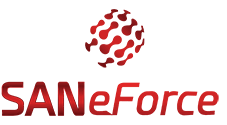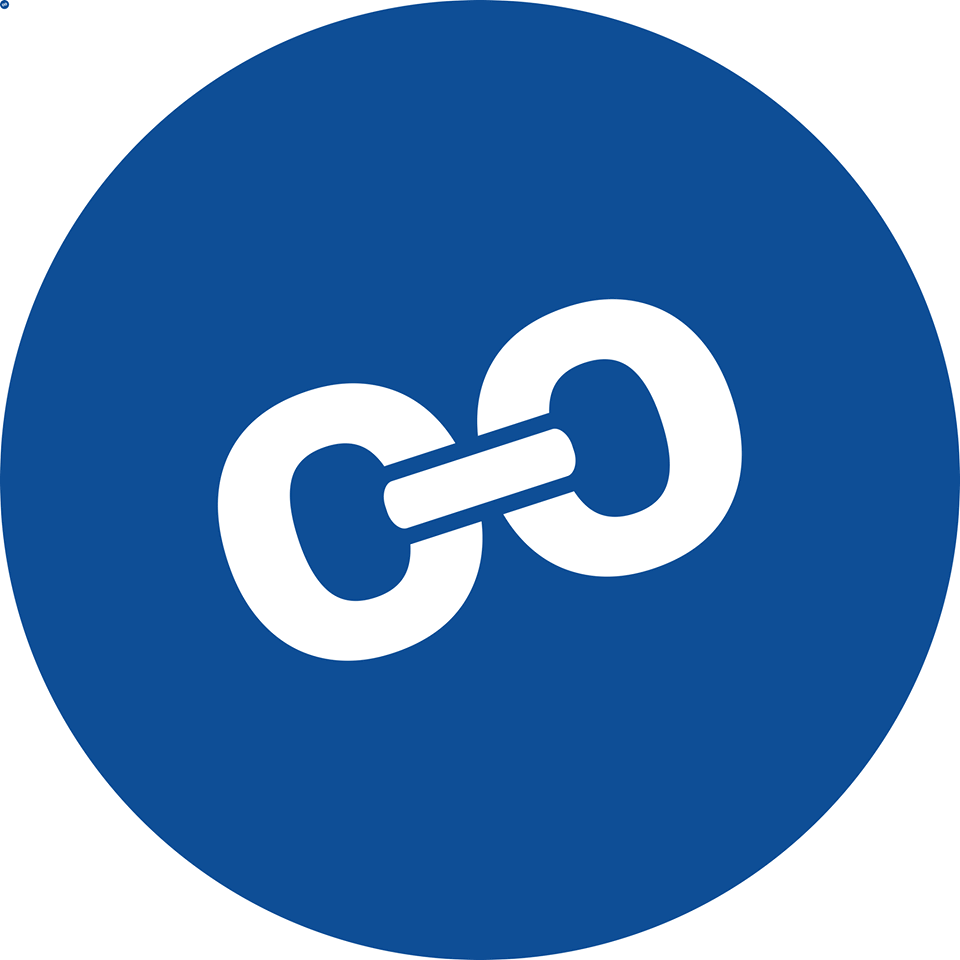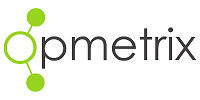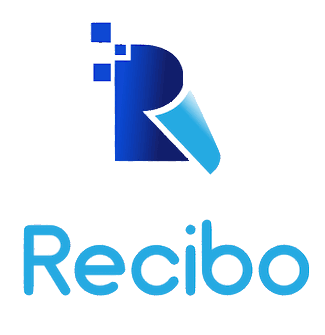What Is Field Force Automation Software?
One solution for streamlining and improving field teams' operations is Field Force Automation Software. Salespeople, technicians, delivery workers, and any other professionals who operate in the field usually make up these teams. Businesses may increase productivity, efficiency, and overall performance by digitizing and automating their field activities with the help of this software.
Businesses may efficiently manage their remote workers, assign tasks and monitor their progress, and get real-time data and insights by utilizing field force automation software. Additionally, it offers tools for communication, route planning, and inventory and asset management, which facilitates field teams' ability to carry out their duties effectively.
Accurate data collection from the field is one of the biggest benefits of employing field force automation software. Making data-driven decisions, streamlining operations, and learning more about the wants and needs of customers are all possible with this data. The program also aids in spending tracking, error reduction, and paperwork elimination, which lowers costs and improves compliance.
Features like job management, real-time tracking, reporting and analytics, and interaction with current systems are crucial to consider when purchasing field force automation software. Understanding the software vendor's pricing structure, deployment choices, and customer service is also essential.
What Are The Recent Trends In Field Force Automation Software?
The market for field force automation (FFA) software has expanded quickly in recent years as a result of the growing need for streamlined and effective field operations. From simple task management programs to all-inclusive solutions that include technologies like artificial intelligence (AI) and the Internet of Things (IoT), FFA software has undergone significant development. FFA software has not only advanced in sophistication but also adjusted to meet the evolving demands of companies across many sectors.
The combination of AI and IoT technologies is one of the most recent developments in FFA software. In order to give real-time insights and predictive analytics, FFA software uses artificial intelligence (AI) to evaluate data from multiple sources, including wearables and sensors. This enables companies to maximize the effectiveness of their field operations and make well-informed judgments.
Furthermore, regular chores and procedures may now be automated by FFA software, which lessens the need for human mistake and manual intervention. For FFA software developers, mobile capabilities have also emerged as a key priority. Businesses want FFA software that can be used from any location and on any device due to the growing number of remote and mobile workforces.
Because of this, FFA software is now more mobile-friendly and accessible via tablets and smartphones, giving remote workers a smooth experience. Additionally, this makes it possible for field teams and office personnel to collaborate and communicate in real time. The move to cloud-based solutions is another development in FFA software.
This removes the need for costly hardware and on-site installation by enabling businesses to store their data on secure servers and access the program via a web browser. Scalability is another benefit of cloud-based FFA software, which enables companies to quickly add or remove functionality as their requirements evolve. Additionally, small and medium-sized enterprises (SMBs) are increasingly using FFA software.
It is now simpler for SMBs to adopt this technology and enhance their field operations without going over budget thanks to the availability of user-friendly and reasonably priced FFA solutions. Last but not least, FFA software has grown more adaptable, enabling companies to customize it to fit their own requirements and operational procedures. As a result, FFA software is now more adaptable and suitable for a variety of sectors, including healthcare and construction.
Benefits Of Using Field Force Automation Software
For companies that depend on a mobile workforce, field force automation software is an effective tool. Numerous advantages of this powerful program can significantly increase productivity, efficiency, and overall business success.
To assist you in making an informed choice, we will examine the main advantages of utilizing field force automation software.
1. Simplified Communication And Collaboration: Simplified communication and collaboration is one of the biggest advantages of field force automation software. This program eliminates the need for drawn-out phone conversations or emails by enabling real-time communication between office staff and field workers. Additionally, it facilitates smooth teamwork, which improves coordination and speeds up problem-solving.
2. Improved Field Visibility: Companies can see their field operations in real time with field force automation software. This enables managers to keep tabs on tasks, track the whereabouts of their field employees, and collect useful information on the status of their work. Better decision-making, increased accountability, and lower operating expenses are all made possible by this transparency.
3. Increased Productivity And Efficiency: Field force automation software may greatly increase productivity and efficiency by automating repetitive jobs and supplying real-time data. With the aid of automated forms, checklists, and workflows, field workers may do chores more quickly, giving them more time to concentrate on high-value assignments. This raises motivation and job satisfaction in addition to increasing overall productivity.
4. Time And Cost Savings: The substantial time and cost savings that field force automation software offers are yet another important benefit. Data entry and report generation are examples of manual processes that can be automated to save time and lower the possibility of human error. Furthermore, inefficiencies and areas for cost reduction can be found with the aid of real-time data and analytics, which will ultimately boost profitability.
5. Improved Customer Experience: Companies can offer a better customer experience by utilizing field force automation software. Better service delivery, enhanced communication, and faster reaction times are made possible by the real-time data. Increased client happiness and loyalty result from this, which eventually gives the business a competitive edge.
Important Factors To Consider While Purchasing Field Force Automation Software?
Software for field force automation is an essential tool for improving customer satisfaction, efficiency, and business process simplification. It might be difficult for purchasers to select the best software that fits their unique business needs because the market is overflowing with possibilities.
The following crucial elements should be taken into account when buying Field Force Automation Software in order to assist you in making an informed choice:
1. Scalability: When choosing a field force automation software, scalability ought to be the first consideration. Your software should be able to adjust and accommodate the growing demands and complexity of your operations as your company expands. It should be able to easily interact with other technologies and software to automate and expedite procedures.
2. Mobile Accessibility: Mobile accessibility should be given top priority in field force automation software. Having software that can be accessed using mobile devices is essential because most workforces are remote and mobile. Better communication and decision-making result from the ability to monitor and update in real-time.
3. User-Friendly Interface: All staff members, regardless of technical proficiency, should find the software's user interface simple to use and intuitive. This reduces training expenses and guarantees quicker acceptance. An overly complicated and cluttered interface can be more detrimental than beneficial, reducing output and raising annoyance.
4. Integration Capabilities: A Field Force Automation Software must be able to integrate with other programs and tools, such as CRM, ERP, and GPS tracking systems, in order to reach its full potential. This increases overall efficiency and permits a smooth data flow.
5. Customization: Your software should be tailored to your particular business operations and processes. Seek out software that may be customized to meet your unique business requirements. This guarantees that the software is a perfect fit for your company and removes the need for extra functionality.
6. Security: When buying any software in the digital age, security is an important factor to take into account. Make sure the Field Force Automation Software you select has strong security features in place to guard your private information and stop illegal access.
7. Support And Reliability: Investing in Field Force Automation Software should pay off in the long run. Verifying the software's dependability and the vendor's support which includes routine upgrades and upkeep—is crucial. Selecting software with a dependable and accommodating support staff is ideal for quickly resolving any potential problems.
What Are The Key Features To Look For In Field Force Automation Software?
You should carefully consider a number of important characteristics when deciding which Field Force Automation Software to purchase. The effectiveness, output, and general success of your field force activities can all be greatly impacted by these characteristics.
The following are the most important characteristics to search for while looking at Field Force Automation Software:
1. Real-Time Tracking And Visibility: This is one of the most important functions of Field Force Automation Software. This enables you to keep an eye on your field force's whereabouts and activities in real time, making sure they are on course and hitting their goals.
2. Mobile Access And Offline Capability: The finest field force automation software should be able to be accessed and used even in places with bad connectivity or remote locations. This makes it possible for your field force to gather information, update data, and do duties without any obstacles.
3. Task And Schedule management: A thorough task and schedule management function ought to be included in Field Force Automation Software. This entails setting up tasks and timetables for your field force and monitoring their performance and completion rates.
4. Automated Data Collection And Reporting: To avoid the need for human data entry, the program should be able to gather data from the field automatically. In order to produce comprehensive reports on the performance and activities of the field force, it should also include customized reporting options.
5. Integration With Other Systems: Verify that the Field Force Automation Software easily connects with your current ERP or CRM programs. By doing this, the necessity for manual data transfer will be eliminated and a seamless flow of data and operations will be guaranteed.
6. Route Optimization And Navigation: To help your field force plan the most effective routes and arrive at customer locations on time, the software should include capabilities for route optimization and navigation.
7. Barcode And QR Code Scanning: By integrating barcode and QR code scanning features into the Field Force Automation Software, you may improve the overall effectiveness of your field force operations by streamlining inventory management and lowering the possibility of mistakes.
8. Client Information And History: Seek for software that gives your field staff access to client information and history, such as past encounters, preferences, and purchase history. They will be able to serve clients effectively and individually as a result.
9. Training And Support: To guarantee that your staff can get the most out of the program, the Field Force Automation program provider should give training and support. This includes lessons, user-friendly interfaces, and quick customer service for any technical problems.
Why Do Businesses Need Field Force Automation Software?
For companies that depend on a mobile workforce to improve productivity and optimize operations, field force automation software is an essential tool. Implementing this technology is becoming more of a need than a luxury for businesses across industries as remote workers and real-time data become more prevalent. Above all, field force automation software provides real-time insight into your workers' field actions.
This enables companies to track the whereabouts of their team members, keep tabs on their progress, and get real-time updates. Businesses are able to respond quickly to any unforeseen problems and make well-informed decisions more quickly when there is this degree of transparency. The capacity of field force automation software to automate and streamline a variety of duties and procedures is another important benefit.
This program removes the need for manual procedures in scheduling, dispatching, data collection, and reporting, lowering the possibility of human error and boosting productivity. Additionally, field force automation software gives companies a comprehensive picture of their operations through consolidated data storage and access.
Better planning, more precise forecasting, and better resource allocation are made possible by this, which eventually results in lower costs and higher profitability. Field force automation software not only improves internal procedures but also raises client satisfaction. Businesses may inform their clients and guarantee prompt and effective service by giving them real-time information on service requests or product deliveries.
Higher client retention rates and a favorable reputation for the brand result from this. Additionally, companies can optimize field force routes by using location-based services, which lowers travel expenses and time. This lessens the negative effects of excessive travel on the environment in addition to saving money.a
How Much Time Is Required To Implement Field Force Automation Software?
Depending on the particular demands and specifications of a company, the field force automation software deployment procedure may differ. The period of time may be a few weeks or several months. As a general guideline, allow at least three to six months for a successful and seamless deployment. In order to guarantee a smooth transition to the new system, this will enable appropriate planning, testing, and training.
Key stakeholders and representatives from various departments should be included in the early phases of implementation in order to collect information and establish the project's scope. Setting reasonable deadlines for the implementation process will also be aided by this. Using the field force automation software, the next stage is to map out the current workflow and determine which sections may be automated or improved.
This could entail educating staff members about the new system and modifying current procedures. The software will be made available to the field force team when it has been tailored and set up to satisfy the unique requirements of the company. To guarantee that they are at ease with the software and can take full advantage of its features, appropriate training and assistance should be given.
In order to resolve any problems or concerns that may come up during the implementation process, it is crucial to keep in constant contact and solicit input from all parties involved. Regular check-ins and reviews should be carried out after the program has been implemented in order to assess its effectiveness and make any required modifications. In general, the complexity of the project and the degree of customisation necessary might affect how long it takes to integrate field force automation software.
Nonetheless, effective planning, communication, and the participation of important stakeholders are essential elements that can facilitate the procedure and guarantee a successful execution.
What Is The Level Of Customization Available In Field Force Automation Software?
One crucial consideration when selecting field force automation software is the degree of customization it provides. Customization enables companies to adapt the program to their unique requirements, guaranteeing optimal effectiveness and output. Since most field force automation software is made to accommodate the particular requirements of different firms and industries, it enables a great degree of customisation.
This implies that companies can modify the program to fit their workflows, team structures, and processes. Fundamentally, customization enables companies to modify the software's user interface by adding their logo and branding colors, for example. As a result, team members utilizing the program have a more customized experience. Additionally, companies can alter work templates, checklists, and forms to suit their own needs.
This makes the process of gathering data more efficient and guarantees that all relevant data is recorded. Additionally, a drag-and-drop functionality found in many field force automation programs enables companies to quickly create and modify dashboards and reports. Businesses now have the freedom to monitor and examine data that is pertinent to their objectives and operations.
The ability to link with other corporate software and systems, such CRM or ERP, is one example of a sophisticated customisation option. This removes the need for manual data entry and guarantees a smooth information flow.
All things considered, the degree of flexibility that field force automation software offers enables companies to adapt the program to their own requirements, resulting in improved productivity, accuracy, and efficiency. To make sure the software fits the unique needs of your company, take into account the customization options when assessing possible software choices.
Which Industries Can Benefit The Most From Field Force Automation Software?
Software for field force automation is a flexible tool that may be very helpful to businesses and organizations in a variety of sectors. This software may be used by a wide range of businesses, including healthcare, retail, and everything in between, to improve overall performance, increase efficiency, and streamline operations.
Some of the leading industries that stand to gain the most from Field Force Automation Software are as follows:
1. Manufacturing: For successful production, a number of departments and procedures in the manufacturing sector must collaborate harmoniously. Among other things, Field Force Automation Software can assist with inventory management, manufacturing schedule monitoring, and equipment maintenance tracking. As a result, the production process becomes more structured and effective, decreasing downtime and raising output.
2. Healthcare: Accuracy and punctuality are essential in the healthcare sector. Healthcare workers can use Field Force Automation Software to help with appointment scheduling, patient record management, and equipment and supply monitoring. Better patient care and increased team communication among medical professionals lead to better health outcomes overall.
3. Retail: To stay profitable, companies must stay ahead of the competition in the retail industry, which is becoming more and more competitive. Inventory management, sales data tracking, and vendor and supplier coordination can all be aided by Field Force Automation Software. Retailers can keep ahead of the competition, cut expenses, and streamline processes thanks to this.
4. Construction: Time-consuming and intricate procedures are common in the construction sector, which can lead to delays and cost overruns. By tracking progress, managing contracts and budgets, and delivering real-time updates, Field Force Automation Software can help with project management. This guarantees timely project completion in addition to saving time and money.
5. Telecom: For best results, telecommunications companies must effectively manage their extensive network of field technicians. Field Force Automation Software makes it easy to send technicians, monitor their whereabouts and progress, and handle customer support inquiries. This results in lower operating expenses, better customer satisfaction, and quicker reaction times.
6. Transportation And Logistics: Accurate and timely delivery is essential to the transportation and logistics sector. Field Force Automation Software can help with managing driver schedules and assignments, optimizing routes, and tracking shipments in real time. Better customer service, lower fuel expenses, and increased efficiency are the outcomes of this.
7. Field Force Automation Utilities: Utility firms with a sizable field personnel for duties like meter readings, maintenance, and repairs may find software very helpful. Work order management, equipment tracking, and prompt service request response are all made easier with the aid of this program. Better dependability, less downtime, and financial savings result from this.
Conclusion
To sum up, your business can gain a lot from investing in Field Force Automation software, including improved accuracy, production, and efficiency. But picking the best software can be difficult, particularly given the wide range of solutions on the market. It is essential to carefully assess your budget and business needs before choosing a software solution. You should also compare options based on features, integrations, and user feedback.
To guarantee a seamless adoption and deployment process, don't forget to take into account the software vendor's degree of assistance and training. Keep in mind that the degree to which your Field Force Automation software meets your unique business requirements will ultimately determine its success. You may choose software with confidence that will enhance your field operations and spur business expansion if you thoroughly evaluate the elements listed in this guide.






















